Your delivery fleet's fuel and maintenance bills are soaring, and your vans are constantly stuck in traffic. This inefficiency is eating away at your profits every single day.
Electric tuk-tuks are perfect for last-mile delivery because they slash operational costs, navigate congested urban streets with ease, and carry significantly more cargo than motorcycles, offering a direct path to higher fleet efficiency and profitability.
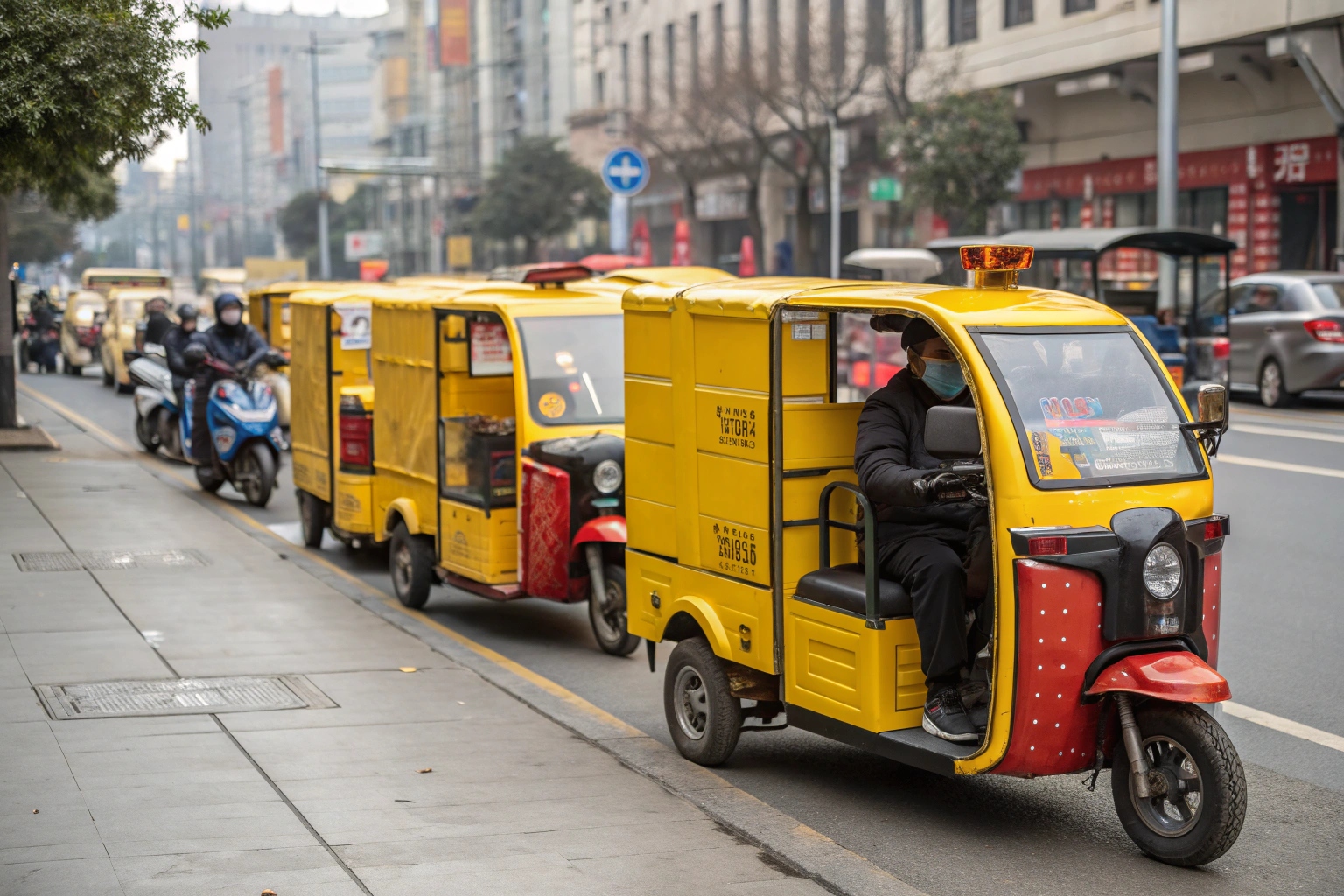
As a factory that exports these vehicles globally, I’ve seen firsthand how businesses are transforming their logistics. The shift isn't just about being "green." It's a calculated business decision. The traditional model of using large vans for small parcels or motorcycles for everything else is broken. An electric cargo tuk tuk isn't just a replacement; it's an upgrade that plugs the expensive gaps in your delivery chain. Let’s dive into exactly why these versatile three-wheelers are winning the last-mile race.
How Do Electric Tuk Tuks Lower Last-Mile Delivery Costs?
Fuel prices are unpredictable and van maintenance is a constant drain on your budget. These operational costs are shrinking your margins on every single delivery you make.
They dramatically lower delivery costs by eliminating fuel expenses entirely, requiring minimal maintenance due to fewer moving parts, and using affordable electricity, which can cut your total operational spending by over 50% using electric tuk.
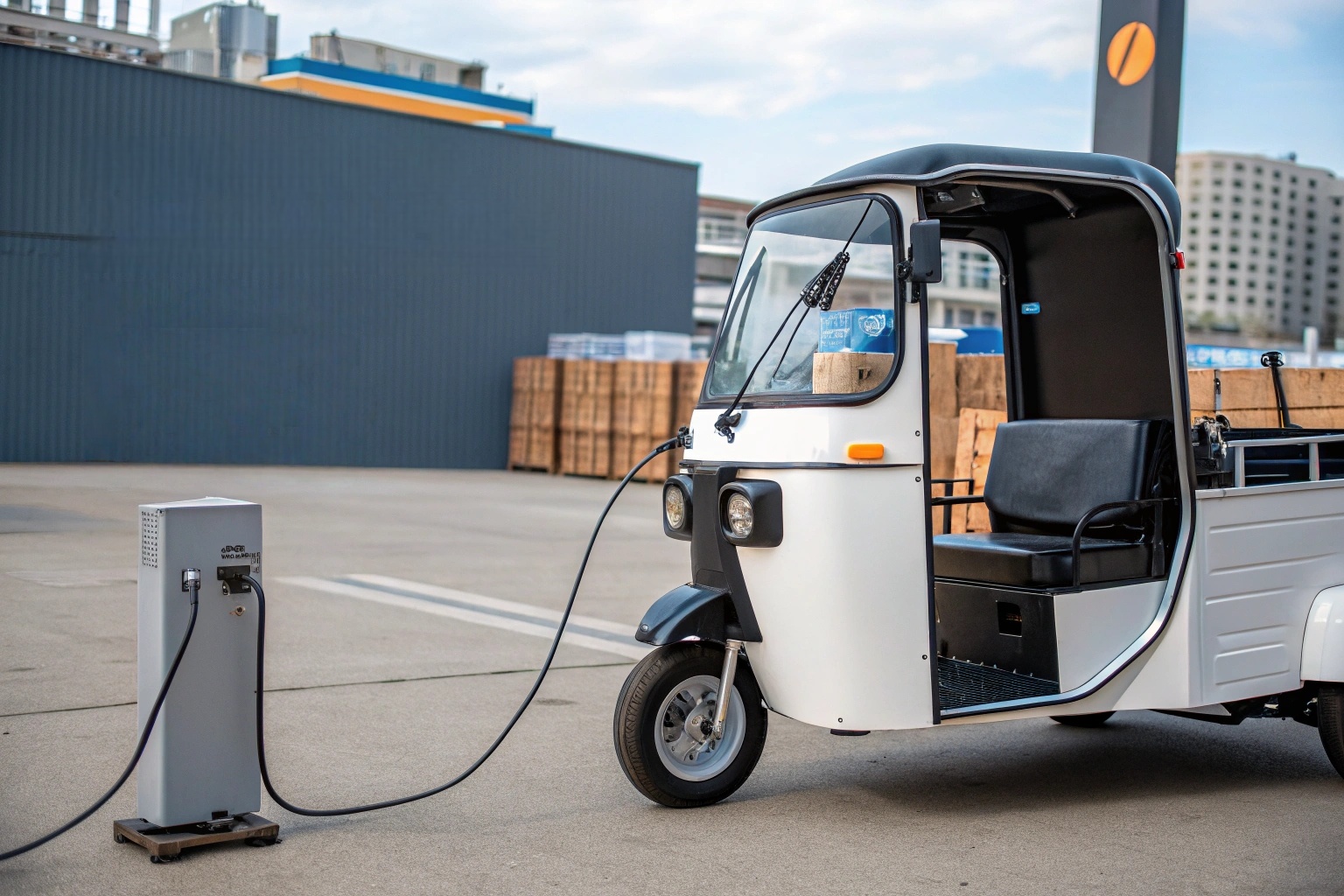
In my experience, the conversation with fleet managers always comes down to the numbers. The initial purchase is one thing, but the Total Cost of Ownership (TCO) is what truly determines profitability. An electric delivery tuk truck wins on TCO every time. We don't have engines that need oil changes, complex transmissions that fail, or exhaust systems that rust. The savings are real and they add up quickly. For a business, this isn't just a small saving; it's a fundamental shift in tricycle truck cost efficiency.
| Cost Factor | Delivery Van | Motorcycle | Electric Tuk Tuk |
|---|---|---|---|
| Fuel / Energy Cost | High & Volatile | Moderate | Very Low |
| Maintenance | High (Engine, Oil) | Low-Moderate | Very Low (Motor, Battery) |
| Labor / Driver | Higher Skill | Lower Skill | Lower Skill |
| ROI Period | 1.5-3 Years | 1-2 Years | 3-6 month |
This improved ROI means your investment starts paying you back much faster, freeing up capital to expand your fleet and your business.
What Types of Goods and Services Can Electric Tuk Tuks Handle?
You might think a tuk-tuk is just for small parcels, limiting your business's scope. This misconception can cause you to miss out on diverse and profitable revenue streams.
They are extremely versatile, electric tuk built to transport everything from hot food and parcels to bulk retail goods and even passengers, with configurable payloads typically ranging from 300 kg to over 800 kg.
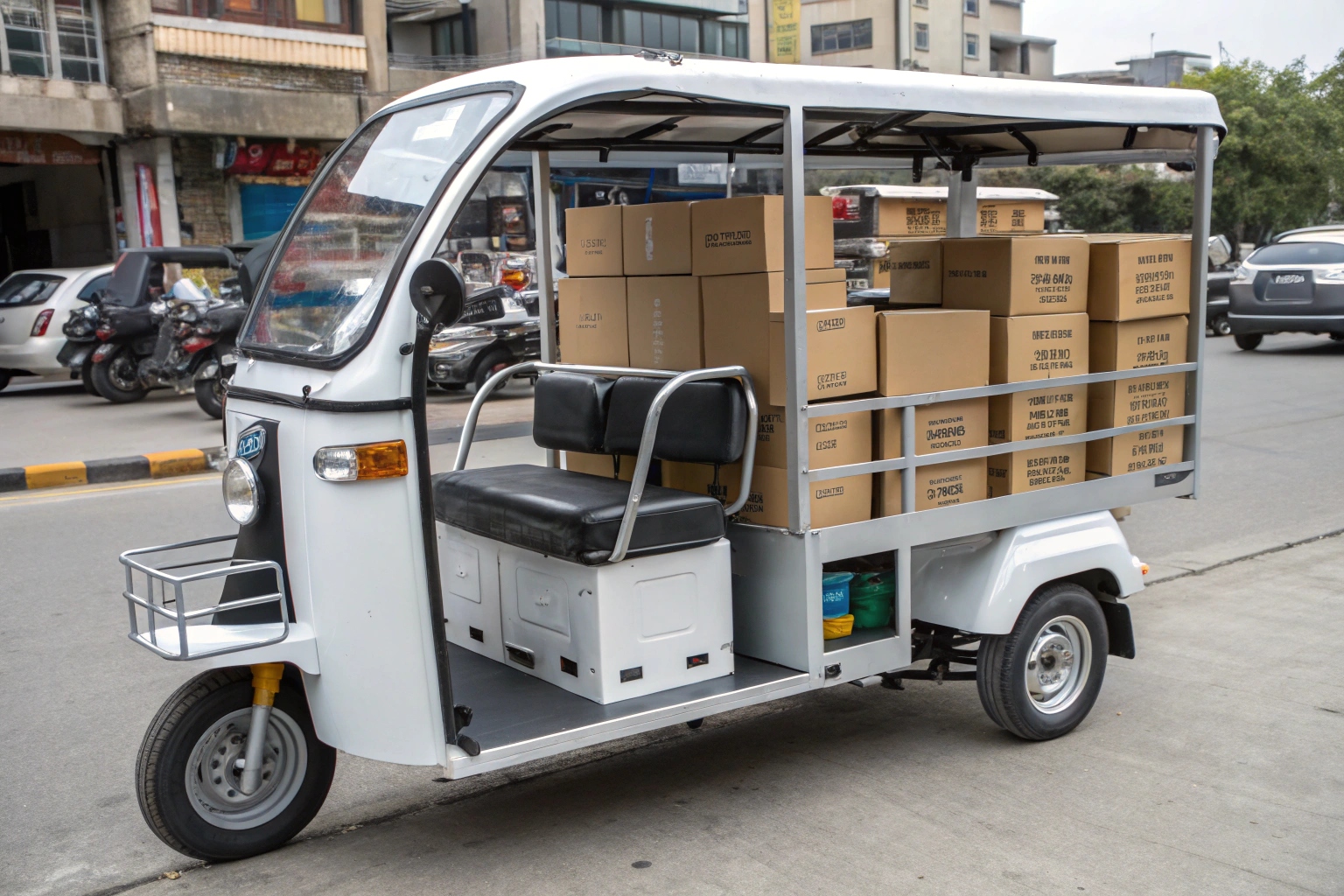
One of the biggest mistakes I see is underestimating the flexibility of a modern bajaj style electric tuk truck. We engineer these vehicles on platforms that can be adapted for dozens of applications. It's not just a delivery vehicle; it's a mobile business platform. We regularly equip them for clients in completely different industries, often using the same basic chassis. This flexibility is key for entrepreneurs and established businesses looking to diversify their services without investing in completely different types of vehicles.
The Mobile Vending Machine
With a custom box, the tuk tuk food truck becomes a mobile cafe, ice cream parlor, or taco stand. Its small footprint allows it to access high-traffic pedestrian areas where a larger truck could never go.
The Urban Logistics Workhorse
This is its primary role. The tricycle pickup model with an open bed is perfect for couriers or landscapers. The enclosed tricycle van version provides all-weather protection for packages, groceries, or laundry services. A heavy-duty tricycle truck model can handle stock replenishment for small retail stores.
The Local People Mover
In many countries, the passenger tuk tuk is the backbone of local transport. They are perfect for short-haul taxi services in tourist zones, on large factory campuses, or within gated communities.
How Do Electric Tuk Tuks Compare to Vans and Motorbikes in Urban Delivery?
Your vans are too slow in traffic and your motorbikes can't carry enough, creating daily bottlenecks. This constant struggle between capacity and agility costs your business time, money, and customer satisfaction.
They strike the perfect balance, offering triple the cargo space of motorbikes with better driver protection, while being far more nimble and cost-effective in dense traffic than traditional delivery vans.
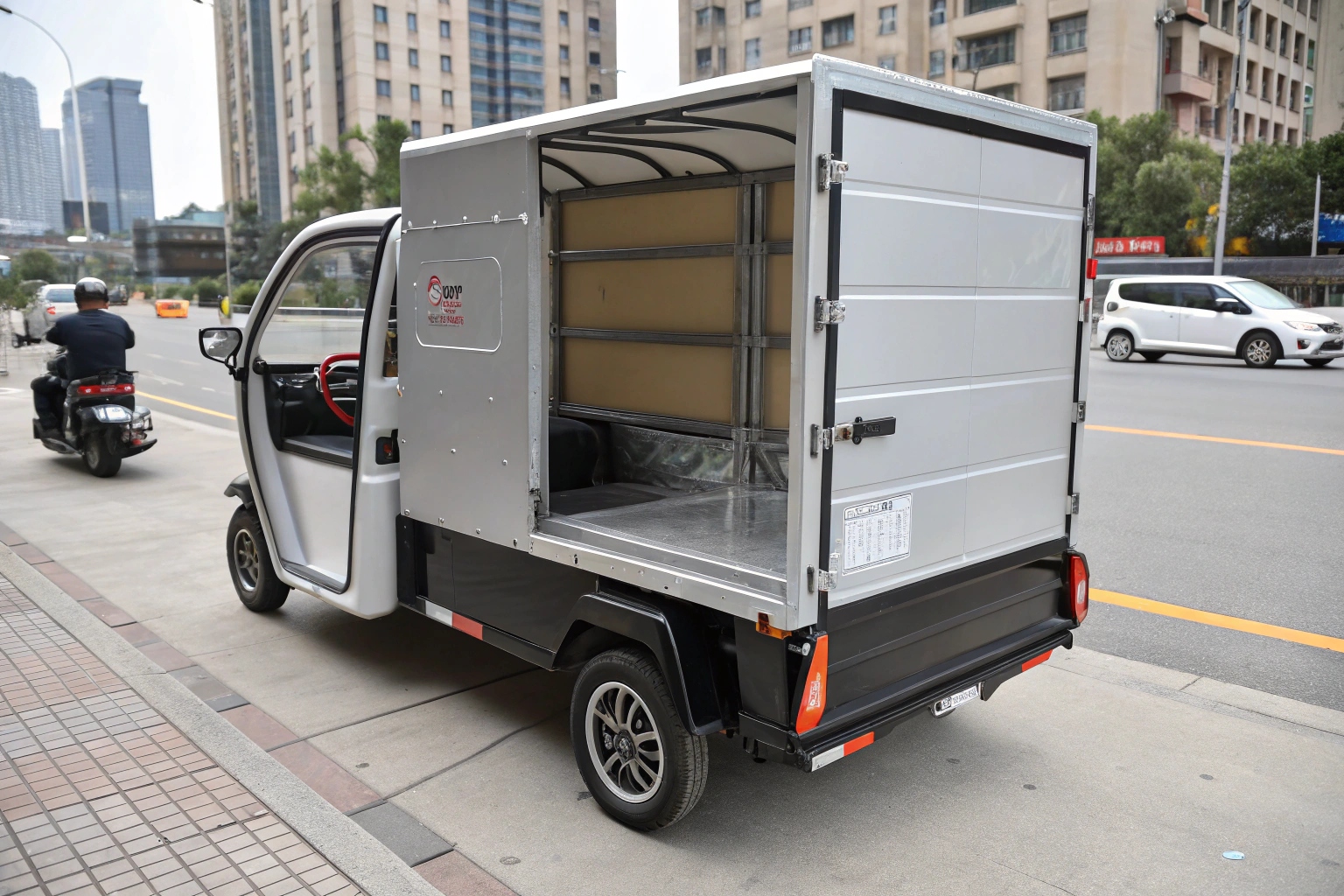
The unique advantage of an electric delivery tuk tuk is that it solves the core problems of its competitors. I often explain to clients that they aren't just buying a vehicle; they are buying a solution to urban gridlock. A motorcycle might be fast, but one package at a time is inefficient. A van has capacity but loses precious time finding parking and navigating tight streets. The urban cargo tricycle is the purpose-built solution for this environment. It can often use bike lanes, make tight U-turns, and park closer to the delivery point, shaving critical minutes off every single stop. In a business where minutes equal money, this is a massive competitive edge.
| Vehicle | Cargo Capacity | Maneuverability | Urban Footprint | Emissions |
|---|---|---|---|---|
| Motorbike | Very Low | Excellent | Very Small | Low-Moderate |
| Delivery Van | Very High | Poor | Large | High |
| Electric Tuk Tuk | Moderate-High | Very Good | Small | Zero |
As more cities implement low-emission zones, the zero-emission benefit also makes your fleet future-proof.
Can One Electric Tuk Tuk Serve Multiple Roles in a Fleet?
Buying a specialized vehicle for every single task is expensive and inefficient. This leads to vehicles sitting idle for half the day, a wasted asset that isn't generating revenue.
Yes, absolutely. Modern designs feature a modular chassis, allowing you to swap the rear module to convert the vehicle between cargo, passenger, or vending functions, maximizing its daily utilization and ROI.
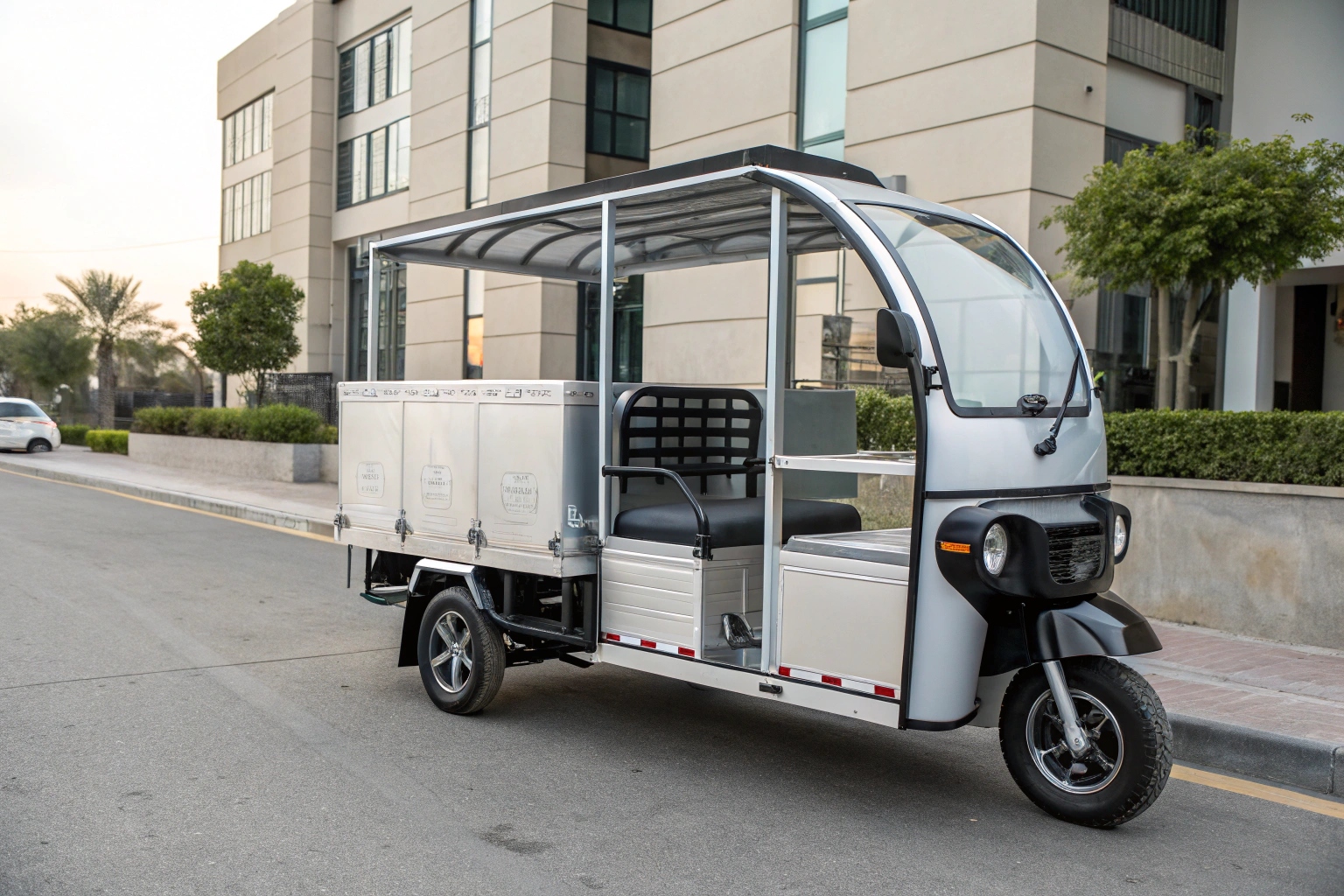
This is one of the most exciting developments we are working on in the factory. Smart fleet managers understand asset utilization is key. A vehicle that is parked is a vehicle that is losing money. The multi-purpose tuk tuk solves this problem. We design a robust base chassis and then create different, easily swappable "top" modules. Imagine a vehicle that works as a modular tricycle van for parcel deliveries from 9 AM to 5 PM. Then, the cargo box is swapped for a passenger bench in 30 minutes, and it works as a local shuttle in the evening. This flexibility allows one vehicle to do the work of two or three, dramatically cutting down your capital investment and increasing your revenue streams. It transforms the vehicle from a simple tool into a dynamic, revenue-generating asset that can adapt to daily market needs.
Conclusion
Electric tuk-tuks master last-mile delivery by cutting costs, navigating cities efficiently, and offering unmatched versatility, making them a smarter investment than both vans and motorcycles for modern logistics.

